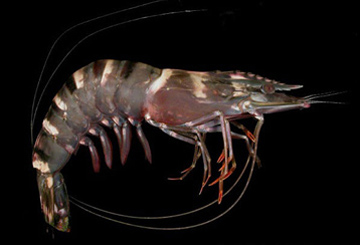270912 tigershrimp.JPG

Tiger shrimp have only recently been sighted in the Gulf of Mexico. Credit: David Knott, Southeastern Regional Taxonomic Center
If you like seafood, then you probably don’t think of “extra-jumbo” shrimp as a bad thing. But for the shrimping industry in the United States — not to mention native species of shrimp — those giant shrimp could cause a lot of problems.
Asian tiger shrimp are some of the largest shrimp in the world. They can grow as long as an adult’s forearm, and weigh three-quarters of a pound. They’re native to the Indian and western Pacific oceans — from the coast of Africa to Australia and the Philippines. But in the last few years, they’ve turned up off the Atlantic and Gulf coasts of the United States. Only a half-dozen were reported in 2006, but by 2011, the number had jumped to almost 600.
So far, marine scientists aren’t sure how the shrimp made it to American waters. They could have hitchhiked in the ballast water of ships, gotten away from shrimp farms, or found some other way in. Scientists are studying the DNA of the shrimp to try and find out where they came from, which could help explain how they got here.
Scientists are also trying to figure out whether there are enough of the Asian tiger shrimp to consider them permanent residents of American waters.
If they are, they could be bad news for native shrimp populations. The newcomers would compete for food and habitat, and they’re so big they could prey on the smaller American species. More research — and more time — will tell us whether the giant Asian tiger shrimp could start to take the place of local species on American tables.

